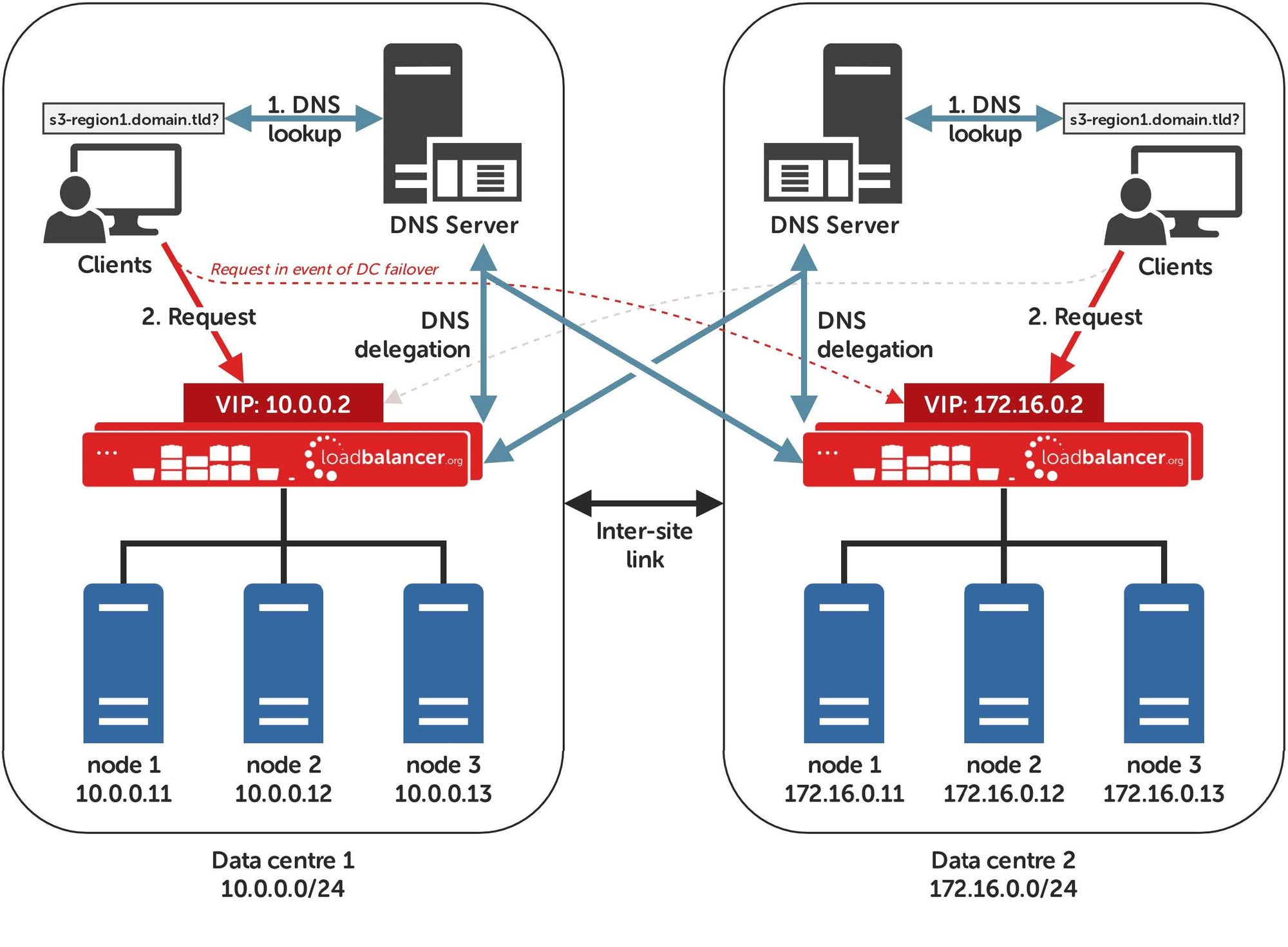
Global Server Load Balancing (GSLB) enables you to distribute internet or corporate network traffic across servers in multiple locations, anywhere in the world. But why – and when – should you use it?
It's fair to say we've had mixed feelings about GSLB in the past.
But over the last decade, we've developed a huge amount of experience and knowledge around globally load balancing servers. So much so, that three years ago, in response to demand from our customers and partners, we took the plunge and included GSLB capabilities in our products. Since then, we've continually enhanced this functionality, making GSLB both:
- more intelligent
- incredibly easy to configure
Ultimately, GSLB can deliver improved application resilience and high availability, while also allowing more control over your users' application experience. As these benefits play a key role in our mission to ensure your applications never break, our ever-improving GSLB functionality is a standard part of our core products – at no additional charge (unlike some other vendors).
So we're going to delve into global server load balancing - what it is, how to configure it, and what's really going on with those application improvements. And if you already have a Loadbalancer appliance, then you already have the additional technology you may need to improve your application availability and user experience across multiple locations.
What is GSLB?
GSLB is the technical mechanism used to distribute internet and corporate network traffic across servers located in multiple locations, anywhere in the world – whether these servers are in an organization’s own data centers or hosted in a private or public cloud.
Just as a load balancer distributes traffic between connected servers in a single data center, GSLB distributes traffic between connected servers in multiple locations. If one server, in any location, fails, or if an entire data center becomes unavailable, GSLB reroutes the traffic to another available server somewhere else in the world. Equally, GSLB can detect users’ locations and automatically route their traffic to the best available server in the nearest data center.
Demand for GSLB has grown significantly in the last three years, as large numbers of organizations have migrated away from traditional on-premise systems and have instead created hybrid cloud and hosted environments. Many have made the strategic decision to split their data resources across multiple locations, to improve business resilience and reduce costs. In all these instances, GSLB allows organizations to deliver a high quality, reliable experience for users, no matter where they are in the world and no matter where their applications and data are located.
What are the benefits of GSLB?
The benefits of GSLB can be broadly grouped into two categories:
- Improved resilience and high availability
- Improved control over the user experience
Let's explore both...
Improved resilience and high availability
Firstly, GSLB improves the resilience and availability of key applications, by enabling all user traffic to be switched instantly and seamlessly to an alternative data center in the event of an unexpected outage. Organizations can use GSLB to constantly monitor application performance at geographically separate locations and ensure the best possible application availability across multiple sites. When routine maintenance is required, organizations can also use GSLB to temporarily direct user traffic to an alternative site, avoiding the need for disruptive downtime.
Example: A large medical facility in Europe currently uses Loadbalancer.org GSLB capabilities to improve the availability of vitally important data storage systems, located at two geographically separate data centers. The data centers each have a ten node object storage cluster, that is replicated to the cluster at the other site. There are high speed links between the two data centers and the users, who are at a third location. The organization deployed a clustered pair of Loadbalancer.org load balancers at each data center for local load balancing, and used the built-in GSLB functionality for load balancing and high availability across the two sites.

Now, in the event of an issue or maintenance at one data center, all user traffic is directed seamlessly to the remaining data center, ensuring the high availability of the storage systems. Otherwise, ordinarily, user traffic is distributed across both active data centers, based on a real-time, intelligent assessment of the nodes that will deliver the best performance for each user.
Improved control over the user experience
GSLB can also be used to control which users are directed to which data centers. It offers sophisticated topography functionality that enables organizations to easily route user traffic to the nearest server, thereby minimizing unnecessary bandwidth consumption, reducing the distance of the ‘hop’ that user requests have to travel and speeding up server responses. Equally, organizations can use GSLB to direct user traffic to specific local data centers to enable them to deliver localized content, relating to the geographic location of the users, or meet country-specific regulatory or security requirements.
Example: A manufacturing company uses Loadbalancer.org solutions to intelligently direct user traffic based on the locations of users. It has three data centers, one in each of its core regions (USA, Asia and Europe), and several offices across each region, with application services replicated across the three data centers.
The company uses Loadbalancer.org’s GSLB functionality and a topology-based solution to recognize the offices' private source IP addresses and direct traffic from each user network to the nearest, local data center, as long as it is available, ensuring minimum response times. In the event of a failure at any of the data centers, users from any region can automatically access available services from another region's data center, maximizing application availability.
GSLB: the Loadbalancer.org advantage
When configured, Loadbalancer.org’s GSLB capabilities provide a reliable health checking service, supporting TCP, HTTP(S) and custom external checks. They employ failover and round-robin techniques, as well as a topology method that directs user traffic to servers in the nearest location.
Our GSLB can return single or multiple answers at once – up to 1,024 – and has recently been updated to improve ease-of-use and introduce more intelligent routing options.
The latest version of Loadbalancer.org’s GSLB, version 8.5, offers:
- Simple configuration
GSLB is a complex concept and figuring out how to set it up and make it work can sometimes be very tricky. Loadbalancer.org has, however, significantly reduced the complexity of configuring GSLB functionality by introducing a new graphical user interface that walks you through each step. Organizations can now get up and running with GSLB in as little as 30 minutes, without the need to hire and retain technical staff with specialist skills. - More intelligent routing
Loadbalancer.org has introduced sophisticated new health checking functionality that adds an extra layer of intelligence to its GSLB. Organizations can now dynamically change where they send traffic, based on a number of criteria, including which global server has the highest load and which will perform best to deliver the optimum response times to end users. If a London datacenter is overloaded, organizations can make a strategic decision to route some traffic from the London region to an alternative datacenter further away, if this option will deliver the best performance. - No additional costs
Our GSLB functionality continues to be a free, integral component within all our physical and virtualized solutions. Other vendors sell GSLB as separate devices or as add-on modules to their core products, at a substantial cost. With our simple, out-of-the-box licensing, however, you can use any of our functionality, at any time, for as long as you like, for no additional fee, future-proofing your investment in Loadbalancer.org solutions.
Remember, if you already have a Loadbalancer.org solution, you already have GSLB. You could deploy it to improve application availability or put it into play as part of a strategy to improve the user experience. Whatever your plans for GSLB now, or in the future, as you’ve got it, you can use it.














